Library of Ruina: Project Moon’s Done It Again
January 19, 2023
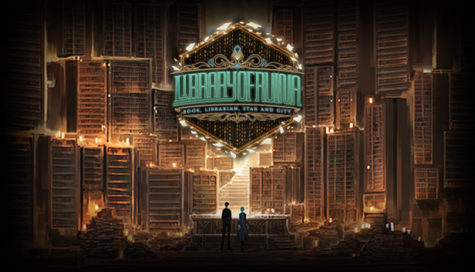
Standing back, they watch it all: the rodent-like bottom-feeders struggling to survive, “Rats” opening up another body to harvest and sell whatever ticks inside. The two owners of a bistro carefully grinding humans into a fine, expensive paste. The surviving member of an entire office wipe-out, moaning and sobbing at the loss of his treasured friends. Commenting on the “shows” that the soon- to-be esteemed guests produce stand the morbid version of Statler and Waldorf, “freed” AI Angela, and her “lapdog” Roland.
“So this is what happened after the fall of Lobotomy Corporation.”
Upon learning the true ending of Lobotomy Corporation, we ponder this cliff-hanger: with Angela retaliating against her role as “loyal AI robot” and taking the fruits of your monster-management labor, what is she to do with all the light that you’ve made? Enter the second game in the series: Library of Ruina! Starting up where we left off, a new character named Roland enters the story. After accidentally incurring Angela’s wrath, he ends up becoming the AI’s right-hand man, and helps carry out her orders. Your sephirot from the previous game return–alive this time–with more life lessons to carry out. Unlike the management of abnormalities, the gameplay of Library of Ruina is more on the combative side. You aren’t managing work orders anymore; you’re managing a battlefield. With human, “human,” and definitely-not-human opponents, can you defeat them all?
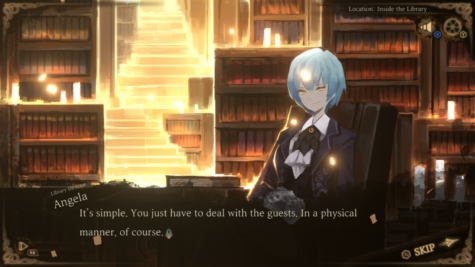
The story behind Library of Ruina is something beautifully tragic, an emotionally investing game with hints of a suppressed hope straining against the darkness. Throughout the game, you get to see into the slowly binding tales of The City. From humans to robots to Sweepers–whatever the heck they are–Library of Ruina builds its world up through the many eyes the player gets to live through.
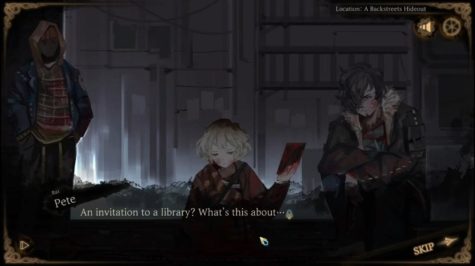
The timeline progresses linearly at first, with only one set path to go on. Although the story may branch out, in order to progress to each section of the story, you are required to complete all of the story receptions. There are general receptions, too, which do not tend to relate to the main plot in integral ways. These are not required. They are simply optional fights for optional gear and optional world-building (it can be good to pick up some of the gear, though).
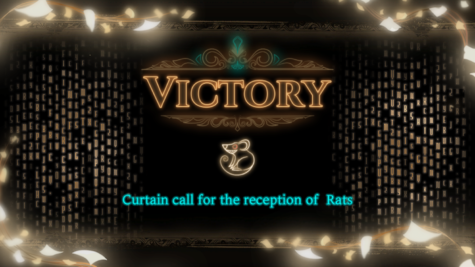
Swords clash against each other, signifying that a battle has begun. The emotions reach their limits as enemies and allies are defeated. A voice rings out in your head: It’s them, the monsters that you were tasked to care for back in the facility. They give power–and enough of it–to tip the scales of battle in your favor.
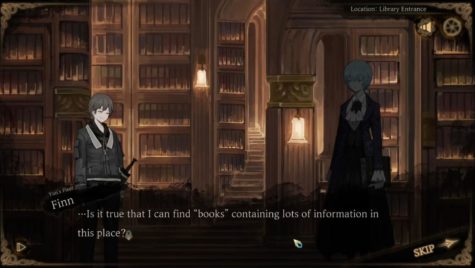
The receptions of Ruina are the main part of the game. Selecting a reception allows you to begin a story segment to get a little backstory leading up to the next fight. At the start of the fight, everything is usually calm. You have the time to look over your opponents’ attacks and passive abilities, as well as play your own attacks in response to the opponents’ attacks. During the fight, the emotion bar on your floor rises as clashes happen between characters. When the emotion level rises, you have the choice between three abnormality cards. These serve as augments to your side of the field, either giving a light buff or a heavy buff with a downside.
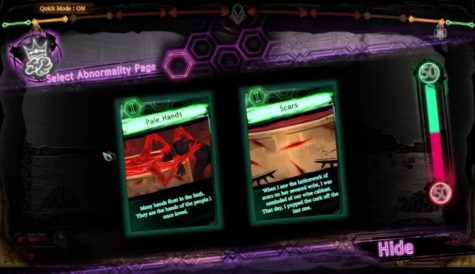
Winning a reception typically rewards the player with books (which may or may not be your dead opponents). Not only can you use these books to further the story, you can “burn” them to gain Key Pages (equipment) and Combat Pages (your “attacks”). These gameplay mechanics are integral to the game, but there’s a more literal sense to these books as well. You can read them! Gaining a character’s Key Page allows you to peek into their life, views, and mindset. While Library of Ruina tends to be a rather linear story, these books give insight on the more unspoken parts of the world.
Aspects of the story also tend to show up more than once and are not one-and-done. The first look we get into The City–the setting of the game–hints at a horrific tale about the use of magic, despite the fact that magic is regarded as impossible, a mere act of imagination. Still, this “magic” keeps appearing throughout the story, dropping more and more hints about who’s behind it. It’s just one such instance of how the finer details and mysteries continue throughout the story.
However, we don’t just look into the denizens of the city and the monsters of their lives. We get to look into the lives of the monsters living inside The Library! How fun!
Abnormalities make their return inside the library, and they are reluctant to give up their power, as well as the person trapped inside. Each abnormality battle offers a unique challenge, and no two abnormality fights are the same. After defeating the abnormality, you gain three of their pages and another ally to use in the reception.
Angela builds up The Library out of spite after the true ending of Lobotomy Corporation, using the light and energy that you’ve made during your playthrough of the game. She’s livid, full of hatred for her creator and the way that he abandoned her, using her for his goals, only to cast her aside. However, she is soon to be accompanied by Roland, a man full of despair and anguish, as she is full of rage.
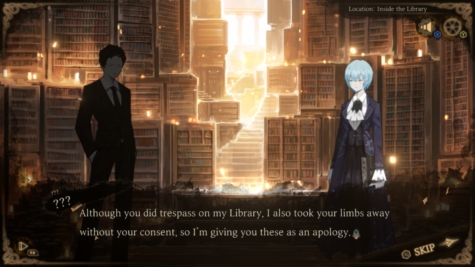
Their first meeting is unpleasant (I mean, he practically snuck up on Angela in The Library when it wasn’t even open for guests yet!) but they quickly team up to achieve their goals: get Angela her one, true book and, subsequently, Roland’s freedom. Together, they see and face the hardships sent to them. The guests sign the invitation, you “greet” the guests, and more guests start signing once they see their friend’s names listed on the very invitation that they’re holding. A butterfly effect, of sorts, but these greetings come with realizations of their own.
In Lobotomy Corporation, you helped the Sephriot come to terms with their lives’ and have their own realizations. Now, having come to better terms with themselves, they serve to help Angela and Roland come to terms with themselves as well. Does Angela truly think the book justifies the means of getting it? Does Roland’s past truly justify the current values that he holds? With the help of the now-called Patron Librarians, maybe they can reevaluate their beliefs and see if they’re truly what the duo want for themselves.
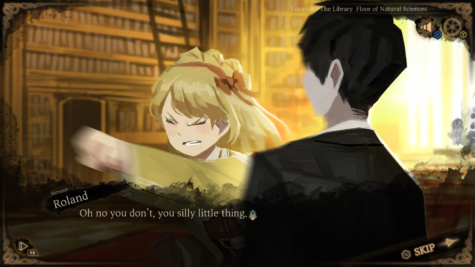
“It seems her emotions have resonated with the library and now she’s in a hostile state. Just leave it to us Roland.” -Yesod
Realization fights occur after the player has defeated all previously available abnormality fights on the floor. The realization fight is a boss rush of each abnormality of the floor, usually upped in difficulty from the past fight. Beating the last phase of the realization awards the floor with three more abnormality cards as well as ego cards, which are powerful cards that, when used, require a few turns to charge back up.
With amazing story-telling, and impressive gameplay, what other aspects of Library of Ruina should one look forward to?
For one, the art of the game has greatly improved from its predecessor. Each panel simply bedazzles the eyes with how smooth it is; the shading, the use of color, the expression of emotions, it’s all utilized extremely well.
Another important aspect to note is the music design: it’s simply top-notch. The Project Moon team has brought on song artist Mili to help produce some of the music, mainly boss themes. There’s nothing quite as chilling as hearing “From a Place of Love” play in its respective fight. Mili’s music isn’t the only impressive thing about the audio. All of the floors in Library of Ruina have amazing musical themes which typically build themselves up, often mimicking the feeling of the fight. There’s even (Korean-only) voice acting! It 100% pulls together the mood of the story! These aspects definitely help with the world building at play.
Just as Lobotomy Corp. took inspiration from (religious) texts and writings, Library of Ruina also draws inspiration from previous works. The new main characters of the story, Roland, Angelica, and Argalia, are all heavily influenced by “Orlando Furioso.”
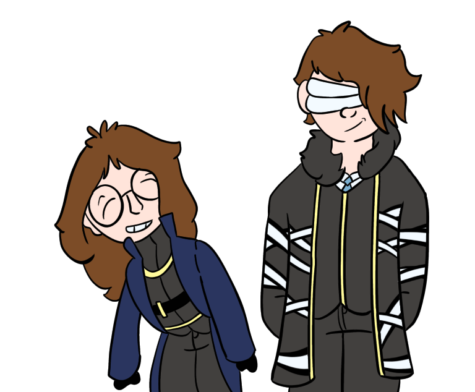
On an informal note, your reviewers love this game. We’re practically addicted to the world this game is in, the characters, and so forth. We love it all. You should play this game, which is on PC (Steam) and Xbox (store), and experience the true story yourself. Even if you don’t, we highly recommend at least watching a playthrough of the game and getting to experience the story some way, somehow. Don’t forget, there’s a community out there. We’re always happy to talk about Project Moon and its games.